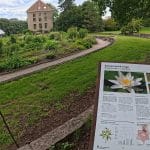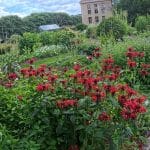Museum enthusiasts will find a delightful adventure in Oslo’s Natural History Museum. This fascinating institution, part of the University of Oslo, showcases a world of exploration across its Geological Museum, Zoological Museum, Climate House and stunning Botanical Garden. You’ll uncover ancient fossils, marvel at diverse ecosystems, and engage in interactive exhibits designed for all ages. Whether you’re a nature lover or simply seeking an enriching day out, this guide will help you navigate your visit to this extraordinary destination in the heart of Norway.
Key Takeaways:
- Diverse Attractions: The museum combines a Geological Museum, a Zoological Museum, a Climate House and a Botanical Garden, each offering unique insights into the natural world.
- Family-Friendly Activities: Engaging exhibits and interactive scavenger hunts make it a perfect destination for families and young visitors.
- Best Visiting Times: Spring and summer are ideal for experiencing the Botanical Garden in bloom, while quieter indoor visits are recommended on weekdays during the school year.
- Special Events: The museum hosts various events and workshops, ensuring a dynamic experience with seasonal activities adding to its charm.
- Accessibility: Most of the complex is designed for wheelchair access, welcoming all visitors.
Valuable Tips When Exploring the Vigeland Sculpture Park
In this article, we will disclose the following 7 essential facts when discovering Oslo’s Natural History Museum:
1. Types of Exhibits
Before your visit, take a moment to explore the diverse types of exhibits that await you at the Natural History Museum. You’ll find:
- Fossil displays, including ancient dinosaurs and significant primate finds.
- Diverse ecosystems are represented in the Botanical Garden.
- Detailed collections of rocks and minerals that showcase Earth’s history.
- Interactive displays featuring native and exotic species in the Zoological Museum.
- Themed gardens highlight the relationship between plants and history.
- Earth’s climate system functions, the consequences of global warming, potential solutions, and individual actions to mitigate climate change.
Thou shall be inspired by the wonders of nature and history!
| Exhibit Type | Description |
|---|---|
| Fossils | Explore ancient remains, including dinosaur fossils and notable primate finds. |
| Plants | Discover a variety of plants in the Botanical Garden from various ecosystems. |
| Animals | Learn about biodiversity through exhibits of native and exotic animal species. |
| Minerals | Delve into fascinating collections showcasing Earth’s geological history. |
| Interactive Displays | Engage with hands-on exhibits designed for learning and fun. |
Geological Museum

The Geological Museum offers fascinating insight into the Earth’s formation and evolution. With an impressive collection of rocks, minerals, and fossils, it highlights Norway’s geological treasures and features engaging exhibitions on dinosaurs. Don’t miss the chance to view the extraordinary fossil “Ida,” which is over 47 million years old and provides a glimpse into the ancient past.
Zoological Museum

Geological wonders transition seamlessly to the wonders of the animal kingdom in the Zoological Museum. Here, you can encounter meticulously crafted displays showcasing a variety of species from Norway and around the world. The exhibits reflect the rich biodiversity of life, with a special focus on native wildlife and noteworthy extinct species.
Another highlight of the Zoological Museum is the Arctic zone, where you’ll find polar bears and reindeer, bringing a piece of the Arctic environment to life. The museum also features interactive exhibits and scavenger hunts designed to engage visitors of all ages, making your exploration both educational and enjoyable.
Exhibitions On Climate

The Climate House is the first building in the Nordic countries dedicated exclusively to climate and climate change. Located within the Botanical Garden, this exhibition educates visitors on how Earth’s climate system functions, the consequences of global warming, potential solutions, and individual actions to mitigate climate change. The building exemplifies sustainable architecture, featuring natural ventilation, locally sourced materials, and solar panels.
Botanical Garden

Zoological diversity is complemented by the serene beauty of the Botanical Garden, which serves as a living museum of plants. Here, you can wander through themed gardens, including a Viking Garden filled with historically significant plants and a Herb Garden that showcases culinary and medicinal varieties.
It’s in the Botanical Garden where you can immerse yourself in a tranquil experience, especially during spring and summer when vibrant flowers bloom. The landscape transforms into a serene winter wonderland in winter, providing a peaceful retreat amidst nature’s beauty.
2. Visitor Tips
Planning ahead is one of the best ways to enhance your experience at the Natural History Museum. Here are a few tips to make the most of your visit:
- Check the event calendar for special activities and workshops.
- Visit during weekdays for a quieter experience.
- Consider bringing a picnic to enjoy in the Botanical Garden.
Knowing these tips will allow you to enjoy all that the museum offers.
Best Time to Visit
Spring and summer are the ideal times to visit and fully appreciate the beauty of the botanical garden as the flowers bloom in vibrant colours. If you prefer a quieter indoor experience, consider visiting during weekdays during the school year when crowds are typically smaller.
Admission and Tickets
Tickets to the Natural History Museum are reasonably priced, with free admission for young children and free entrance to the Botanical Garden. A ticket gives entrance to all the museum exhibitions and offers great value for families. Be sure to check the official website for the latest information on pricing and available discounts.
Accessibility
Visit the Natural History Museum easily, as most areas are wheelchair accessible. Ramps, elevators, and wide pathways ensure that everyone can enjoy their time exploring the exhibits and gardens.
Understanding the museum’s commitment to accessibility allows you to plan confidently for your visit. The Botanical Garden also features thoughtfully designed paths, ensuring that individuals with mobility challenges can navigate the space comfortably. If you require any specific assistance during your visit, the staff is always available to help facilitate a positive experience.
Crucial Facts Regarding the Norwegian Mini Cruise Experience
3. Step-by-Step Planning

Many visitors appreciate the convenience of structured planning when visiting Oslo’s Natural History Museum. Here’s a breakdown to make your experience seamless:
| Step | Action |
|---|---|
| 1 | Check the museum’s opening hours and special events before your visit. |
| 2 | Purchase admission tickets online for convenience and check for family discounts. |
| 3 | Plan your transportation: use public transit or lookout for limited parking nearby. |
| 4 | Set aside time for each section: Geological Museum, Zoological Museum, Climate House, and the Botanical Garden. |
How to Get There
An easy way to reach the Natural History Museum is via public transportation. Take the metro (T-bane) to Tøyen Station, then enjoy a short walk to the museum’s entrance. This location in Oslo’s Tøyen district is well-connected, ensuring a hassle-free journey for your visit.
What to Expect During Your Visit
If you’re looking for an enriching experience, you’ll find that the Natural History Museum offers an array of fascinating exhibits that cater to all ages. You can explore geological wonders, meet diverse animal species, and stroll through beautiful gardens, making for a well-rounded outing.
Plan to spend time in each section of the museum to enhance your visit. Explore the remarkable fossil collections and dinosaur displays in the Geological Museum, probe into the diverse animal exhibits in the Zoological Museum, See how climate change affects us in the Climate House, and take a peaceful walk through the vibrant paths of the Botanical Garden. Interactive elements and educational activities await you at every turn, ensuring a memorable experience for everyone at your party.
4. Factors to Consider
Now that you’re excited to explore the Natural History Museum consider the following factors to optimize your visit:
- Time of year for the best Botanical Garden experience
- Weekdays during the school year for fewer crowds
- Admission fees and combination ticket options for value
- Accessibility features for those with mobility challenges
- Dining options nearby for a convenient meal or snack
Recognizing these elements will enhance your experience at this remarkable museum.
Family-Friendly Features
On your visit, you’ll find that the Natural History Museum is tailored for families, with interactive exhibits and educational activities designed to engage children of all ages. The “Dinosaur Trail” and animal-themed scavenger hunts encourage exploration and learning, making it a fun outing for everyone in your group.
Special Events and Activities
Special events and activities offer additional layers of enjoyment to your visit. The museum hosts guided tours, hands-on workshops, and seasonal events, ensuring that there’s always something exciting happening.
With a calendar filled with unique programs, you can participate in guided tours of the Botanical Garden or enjoy fossil workshops, which are particularly engaging for children. Seasonal events, like themed markets during the holidays or interactive activities during Easter, enrich your experience, making every visit feel fresh and memorable.
5. Pros and Cons of Visiting
After considering the various aspects of a visit, weighing the pros and cons to better plan your experience at the Natural History Museum is helpful.
| Pros | Cons |
|---|---|
| Rich educational content | Can be crowded during peak seasons |
| Engaging exhibits for all ages | Limited parking available |
| Beautiful Botanical Garden | Some areas may be less appealing in winter |
| Accessible to people with mobility challenges | Admission fees may add up for families |
| Regular special events and workshops | Indoor exhibits may lack natural light |
| Easy accessibility via public transportation | Walking between exhibits in the complex can be tiring |
Advantages of Exploring the Museum
Exploring the Natural History Museum offers a wealth of knowledge, showcasing diverse exhibits that cater to every interest. You’ll find engaging displays in the Geological and Zoological Museums, the Climate House, and the stunning Botanical Garden. This combination brings the worlds of geology, biology, and horticulture together to captivate visitors of all ages. With interactive elements and educational activities, your experience will inspire curiosity and a deeper appreciation for the natural world.
Potential Drawbacks
On the other hand, while the museum has much to offer, there are certain disadvantages to consider during your visit.
It’s worth acknowledging that some visitors may find the museum crowded, especially during weekends or school holidays, which might detract from the experience. Limited parking nearby can also inconvenience those driving, leading you to rely on public transportation. Additionally, winter months might offer less vibrant views of the Botanical Garden, and indoor exhibits may lack ample natural light. Considering these potential drawbacks will help you prepare for a more enjoyable visit.
I Visit Thon Hotel Slottsparken In Oslo
6. Dining and Relaxation Options

All visitors to the Natural History Museum can enjoy a delightful break at the on-site café in Tøyen hovedgård, where you can savour a selection of snacks, light meals, and beverages. If you prefer the great outdoors, consider packing a picnic in the Botanical Garden, which offers plenty of benches and open spaces for a relaxing afternoon. Whether you dine inside or outside, it’s an excellent way to recharge before or after exploring the museum’s fascinating exhibits and stunning gardens.
7. Summing up
Now that you’re informed about Oslo’s Natural History Museum, you can look forward to immersing yourself in an incredible blend of nature and science. From the Geological and Zoological Museums to the educational Climate House and serene Botanical Garden, there’s something to captivate your imagination at every turn. With family-friendly features, special events, and convenient access, your visit promises to be educational and enjoyable. Make sure to include these highlights of Oslo in your travel plans for a truly enriching experience.
FAQ about Discovering Oslo’s Natural History Museum
-
What are the opening hours of the Natural History Museum?
The Natural History Museum is open year-round, but the specific hours vary seasonally. It’s a good idea to check the official website for the latest information on operating hours before your visit.
-
Can I take photos inside the museum?
Yes, visitors are generally allowed to take photos for personal use within the museum, but flash photography is often prohibited to protect the exhibits. Always look for signage indicating photography rules in specific areas, and be considerate of other guests while taking your pictures.
-
Are there any guided tours available?
The Natural History Museum offers guided tours that can enrich your experience by providing in-depth information about the exhibits. These tours are usually available on weekends or during special events. Be sure to check the museum’s schedule to reserve your spot if you’re interested.
-
Is there a gift shop at the museum?
Yes, the Natural History Museum has a gift shop where visitors can purchase souvenirs, educational toys, and books about natural history. It’s a great spot to find keepsakes from your visit or gifts for friends and family.
-
What should I wear when visiting the Botanical Garden?
When visiting the Botanical Garden, it’s advisable to wear comfortable clothing and shoes suitable for walking. If you plan to visit during the spring or summer, consider dressing in layers and bringing sunscreen, as you may spend a lot of time outdoors. Warm clothing is recommended in colder months to enjoy the serene winter landscapes.








